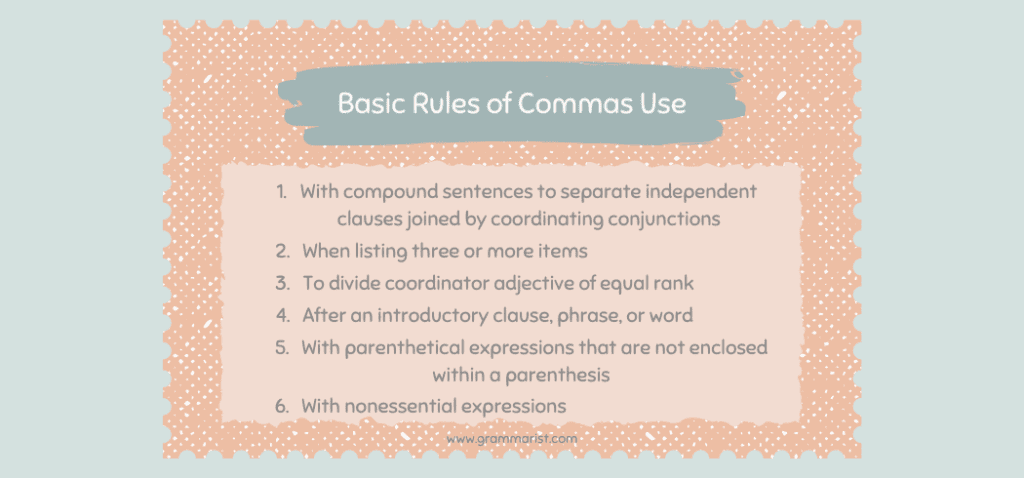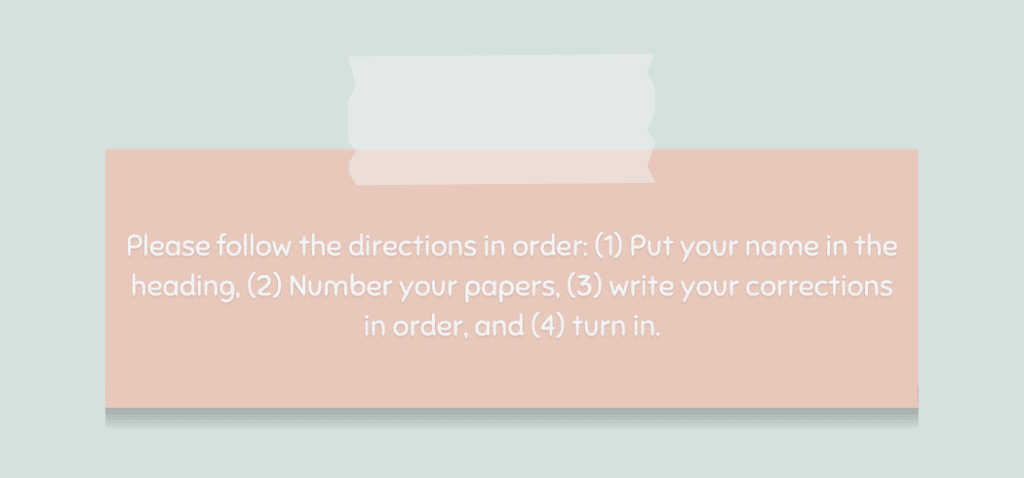The students in my class regularly overuse commas, but the minute parentheses are included in a sentence, they are nowhere to be seen. This is due to the misconception that a pair of parentheses replaces the use of commas, but this isn’t always the case.
This is a common issue writers struggle with, and we review the basic rules of using commas and parentheses to help them understand when to use them together and when not to.
Parentheses often offset expressions (called parenthetical expressions) that would otherwise be used with a set of commas to create a larger sentence. However, that doesn’t mean the commas always go away completely. Take a look at the basics of how to use these together and practice with a simple worksheet to help you get it right.
Basic Rules of Commas Use

Commas are used to separate added details and basic sentence elements within a complete sentence. They indicate a slight pause and help provide flow to the ideas being presented. Without them, words would jumble together, and the message could be lost.
Students often make the mistake of including a comma anytime they take a brief pause in their writing. They think their speech dictates the comma location rather than basic grammar rules. But, comma rules aren’t difficult to follow.
They are used in six ways:
- With compound sentences to separate independent clauses joined by coordinating conjunctions
- When listing three or more items
- To divide coordinator adjectives of equal rank
- After an introductory clause, phrase, or word
- With parenthetical expressions that are not enclosed within a parenthesis
- With nonessential expressions
You also use them to separate locations, dates, addresses, and other similar items.
Basic Rules of Parentheses Use
Parentheses (also called round brackets) are one way to offset the simple language of a parenthetical expression. My students wrongly assume that if a set of parentheses are used to offset information, they replace commas entirely.
This isn’t always true, and knowing how to use parentheses is the first step toward understanding when a comma should also be included.
Parentheses are used to set off nonessential supplementary material. They are the strongest separator you can use for asides, but only when the information comprises one or more simple sentences or is not needed to understand the rest of the sentence.
You can also use parentheses to set off numbers or letters representing a series or include specific events or dates.
When to Use a Comma With Parentheses
Commas and parentheses can be used alongside one another, but it is important to remember from the rules above that they serve different purposes within a sentence. In order to determine if a comma belongs with parentheses, keep this rule in mind:
Commas should be used with parentheses ONLY IF the sentence would require a comma WITHOUT the parentheses.
For example, the following sentence DOES NOT require a comma in its original form. Therefore, you would not add one if parentheses are added:
- Original: Sarah completed her homework to avoid doing it over the weekend.
- With Parentheses: Sarah completed her homework (all in a rush) to avoid doing it over the weekend.
If the original sentence requires a comma, you would include the comma with the parenthesis.
For example:
- Original: Once Sarah had completed her homework, she had difficulty convincing her mother to go out with friends.
- With Parenthesis: Once Sarah had completed her homework (all in a rush), she had difficulty convincing her mother to go out with friends.
Does the Comma Belong Before or After a Parenthesis?
Remembering the above comma rules is easy for students, but convincing them to apply where the comma belongs is another story. Although they learn simple grammar in elementary school, they are expected to retain and apply those lessons independently once they are in secondary school.
This is also an easy rule to remember; you have to remember why parentheses are used in the first place: to offset information NOT essential to understanding the sentence. Therefore, commas should never be placed before parentheses (with one exception, explained below). Place the comma after parentheses for correct sentence format.
For example:
- After making the phone call to confirm the appointment (and waiting on hold for over 20 minutes), Ana had to rush back to work.
There is ONE exception to this rule, and that is when you are using parentheses to set off numbers or letters that represent a series. This actually follows basic commas rule use, but it does place the comma next to the leading parenthetical mark.

For example:
- Please follow the directions in order: (1) Put your name in the heading, (2) Number your papers, (3) write your corrections in order, and (4) turn in.
When to Use Commas Within Parentheses
Commas also belong within parentheses when they follow the correct rules of comma punctuation mark use. If commas are properly punctuating the material within the offset, then they should be used.
For example:
- I picked up the party supplies (balloons, streamers, and cake candles) after work since Dani had forgotten them.
Let’s Review
Getting both native and English language learning students to be confident writers starts with good grammar skills. When my students are unsure of whether they should place a comma with a set of parentheses, I ask them to rewrite the sentence without the offset. If the sentence would normally be punctuated with a comma, then they know they need to place the comma following the closing parenthesis.
Anything placed within the parenthetical elements should also be punctuated properly with commas.
